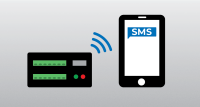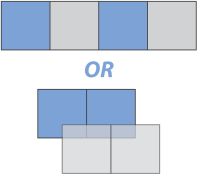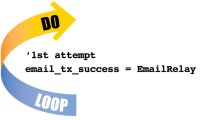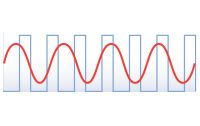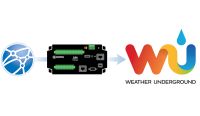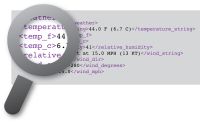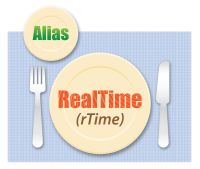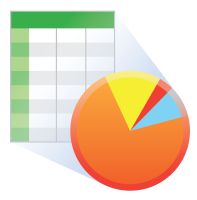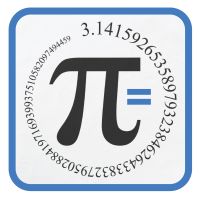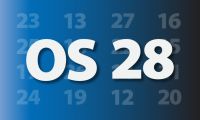公司博客 Your source for useful how-to information and helpful expert advice
显示 1 - 20 of 26 文章 tagged with: CRBasic
如何使用 PakBus®加密保护数据安全 : 第 2 部分
作者: Shaurya Rastogi | 最后更新: 11/17/2025 | 评论: 0
In this second blog article in the series, I'll share with you additional practical steps that you can take to keep your automated monitoring platform secure. If you missed my first article about PakBus encryption or want to review it again, please read How to... 阅读更多如何使用 PakBus®加密保护数据安全 : 第 1 部分
作者: Shaurya Rastogi | 最后更新: 11/03/2025 | 评论: 0
In today’s connected world, protecting your data is more important than ever, especially when it comes to environmental, industrial, or scientific monitoring. If you’re using an automated monitoring platform (also known as a data-acquisition system or data logger) from Campbell Scientific, strong security practices safeguard... 阅读更多What You Should Know About Our New Training Option
作者: Jacob Davis | 最后更新: 09/10/2024 | 评论: 2
The Campbell Scientific Learning Center is launching as a third training option, bringing self-paced learning to our customers. I am excited for this opportunity to expand our training availability beyond our current offerings: live, in-person training and live, online training. I hope you can take advantage... 阅读更多What You Should Know: Improvements to SMSSend()
作者: Dana Worley | 最后更新: 04/09/2021 | 评论: 0
Do you currently use SMSSend() in a CRBasic data logger program to send SMS messages through a Campbell Scientific CELL2XX internal or external cellular module? There are some things you should know about the recent improvements we made that affect how SMSSend() works. With the release... 阅读更多7 Things You Should Know about New Cellular Options for Data Loggers
作者: Gary Roberts | 最后更新: 02/21/2018 | 评论: 3
You may have heard about the new integrated cellular modem gateways available as options on some of our data loggers. But, do you know what these options really offer, and how they can help your data communication needs now and for decades to come? In... 阅读更多了解CRBasic的程序编译模式: Sequential和Pipeline
作者: Janet Albers | 最后更新: 10/25/2017 | 评论: 6
Have you ever noticed a message saying that your CRBasic program compiled in PipelineMode or SequentialMode? What does it mean? And, when does it matter? In this article, we’ll look at these two modes. Sequential Mode Let’s start with the more straightforward mode: SequentialMode. The CRBasic Editor... 阅读更多CRBasic利用Loops指令避免不必要的跳扫描
作者: Gary Roberts | 最后更新: 05/31/2017 | 评论: 2
Maybe you’re like me when it comes to skipped scans. I have always disliked seeing skipped scans in my data loggers. I have been trained to watch out for them and do my best to write my CRBasic programs in a way that makes them... 阅读更多如何利用DNP3来获取实时测量数据
作者: Paul Smart | 最后更新: 09/02/2016 | 评论: 1
Turning your Campbell Scientific data logger into a DNP3 outstation is a great way to allow systems that use the DNP3 protocol to have access to your live measurement data, as well as historical data. When you use your data logger as a DNP3 outstation, the... 阅读更多How to Store Data Logger Data to a Memory Card
作者: Carolyn Ivans | 最后更新: 06/22/2016 | 评论: 7
You may have identified the need to add external data storage to your data logger with flash-memory cards. But do you know which CRBasic instruction to use to do it? In this article, I’ll help you choose the most suitable instruction for your application. In a... 阅读更多如何选择正确的脉冲测量方式
作者: Jacob Davis | 最后更新: 04/21/2016 | 评论: 0
Have you ever had a sensor work on a P (pulse) data logger terminal, but not on a C (control) terminal? Is the list of choices for the PConfig parameter in the PulseCount() instruction daunting? Campbell Scientific data loggers offer several options for measuring pulse... 阅读更多如何利用Modbus来获取实时测量数据
作者: Paul Smart | 最后更新: 04/07/2016 | 评论: 24
Did you know that you can turn your Campbell Scientific data logger into a Modbus TCP/IP server? Do you know why that’s a good idea? Campbell Scientific data loggers are commonly used as Modbus server devices. This means that the data logger is configured to... 阅读更多5个步骤让你CR6的数据传递给 Weather Underground
作者: Sam Utley | 最后更新: 03/23/2016 | 评论: 10
Note: It appears that after this blog article was written, Weather Underground has been phasing out the “PWS – Upload Protocol.” The following tutorial may or may not work currently or in the future. However, it continues to offer some insight into structuring a CRBasic... 阅读更多6个步骤帮助你从源代码中获取数据
作者: Gary Roberts | 最后更新: 03/02/2016 | 评论: 1
Would it be helpful to include data from a reputable source with your own data? If you have permission to use another source’s data for free or by agreement, how can you easily extract the specific data you want to use without doing a lot... 阅读更多DNP3介绍
作者: Paul Smart | 最后更新: 01/20/2016 | 评论: 0
Have you heard of DNP3 but been unsure of what it is or what it’s used for? In this brief article, I’ll introduce you to this communications protocol, its role in SCADA applications, and how you can use it with your Campbell Scientific equipment and... 阅读更多如何将风向转换为度数
作者: Jacob Davis | 最后更新: 01/06/2016 | 评论: 2
Do you feel lost when sifting through wind direction data that is listed in degrees? For example, can you picture in your mind what direction 195 degrees is? Would it be easier if your data logger could put your data in compass directions instead? In... 阅读更多如何通过TCP/IP来访问和控制你的Modem?
作者: Gary Roberts | 最后更新: 12/09/2015 | 评论: 1
Have you ever wanted the ability to control your Raven cellular modem with your data logger? Would it be nice to be able to get data on the health of your cellular modem and its data network? Maybe you even want to reset your Raven... 阅读更多RealTime()指令介绍
作者: Janet Albers | 最后更新: 10/07/2015 | 评论: 2
CRBasic has a full menu of instructions to help you write or edit your data logger program. This article offers a main course of scheduling your data logger actions using the RealTime() instruction with a side dish of making your program easier to read with... 阅读更多CRBasic简化数据处理的技巧
作者: Barbra Utley | 最后更新: 08/12/2015 | 评论: 3
You’ve collected your measurement data, but how do you easily make sense out of it? How can you simplify the post-processing of your data and start analyzing it sooner? In this article, I’ll explain how adding some code to your CRBasic program can save you... 阅读更多CRBasic中Constants的用法
作者: Janet Albers | 最后更新: 08/05/2015 | 评论: 0
Why should you use a Constant declaration in your CRBasic program? What is a Constant anyway? In a previous article ("Going Public with Your Variables in CRBasic"), we talked about the Public and Dim variable declarations. Variables are just that—variable; they change. Constants, on the other hand, don’t change;... 阅读更多数组的运用:复制或传递
作者: Janet Albers | 最后更新: 07/21/2015 | 评论: 0
Copying or transposing has become easier with OS 28 (CR6 OS 1). This new operating system enables you to copy portions of an array to a new location, such as when transposing rows and columns. In this example we start with A(3,2) (3 rows, 2 columns) initialized as... 阅读更多













